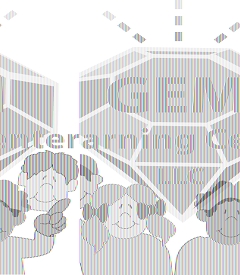Dyslexic Learning StyleHumans think in two ways: verbal conceptualization & nonverbal conceptualization. Everyone thinks in both modes, but each individual tends to specialize in one or the other. Verbal conceptualization -- means thinking with the sounds of words. Verbal thought is linear in time. It follows the structure of language. When using verbal thought, a person composes mental sentences one word at a time. Verbal thinking occurs at about the same speed as speech. When we use verbal thought, we are thinking with the sounds of the language. Nonverbal conceptualization -- means thinking with the pictures of concepts or ideas. Nonverbal thought is evolutionary. The picture “grows” as the thought process adds more concepts. This is known as picture thinking. When picture thinkers form mental pictures of concepts and ideas, the pictures aren’t merely visual; they are more like three-dimensional, multi-sensory movies. They change and evolve as a sentence is read. The process is many times faster than verbal conceptualization. Reading a sentence while using nonverbal thought can produce dyslexic symptoms. The development of the picture being formed is stopped each time an unknown word is encountered, because it creates a blank spot in the overall picture. This problem is compounded each time they try to read a word with no mental picture. Soon they will reach their threshold of confusion and become disoriented. When they are disoriented, they are no longer focused and then fluency continually decreases. The cornerstone of the Davis procedures is the discovery that dyslexia and many other learning disabilities stem not from brain deficits or damage, but from this perceptual talent. Ronald Dell Davis found that a key element of the thought process used by dyslexic individuals is the ability to unconsciously alter sensory perceptions and perceive them as reality, and that this ability often interferes with developing good academic skills. This discovery then led to an entirely new understanding of the dyslexic learning style. The procedures used in a Davis program teaches picture thinkers how to control their dyslexic symptoms so they can read and comprehend with less difficulty. Dyslexia is a GiftDyslexics are visual learners with inherent mental gifts and talents. People who develop dyslexia think in pictures rather than words; they are imaginative, creative, and solve problems by looking at the whole picture rather than working step-by-step. When a dyslexic encounters an object that is unfamiliar or confusing, the natural tendency is to turn that object around in the mind to make sense out of it. This is very creative and works well in the natural world when looking at 3D objects, but does not work at all in reading, writing, or doing some forms of math. This kind of thinking we call non-verbal conceptualization. It's fast and powerful in the right situations. The problem comes in when trying to use this mental process to figure out words and numbers. What the dyslexic is doing is trying to make sense out of letters or numbers (2D images) as if they were objects in nature. The result is confusion. Confusion can then lead to symptoms like slow reading, poor spelling, poor comprehension, dysgraphia (handwriting that’s hard to read), and/or math difficulties. |

Summer tutoring for Reading and Math
Do you or a loved one struggle with understanding what you read? Or maybe you/they also have a hard time reading the words correctly and this is holding you/them back from being able to achieve academic or career success. The week long 30 hour program called Davis Dyslexia Correction Method (more)

